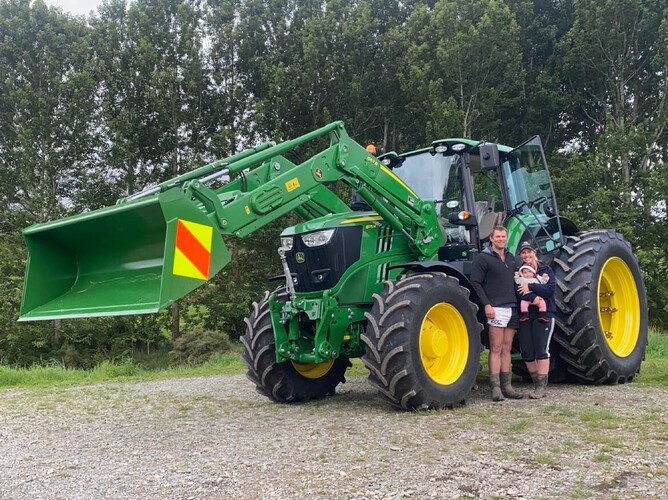Local sheep and beef farmers Nick and Alexis Wadworth have been using a drone on their farm for the past few years. What may have been seen by some farmers as an unnecessary expense, a drone has proved a great tool for animal welfare on farm for them.
Is it a bird? Is it a plane? You might have been surprised a few years ago to see a farmer using a drone on their farm, but with the accessibility of the technology increasing, a drone has become a useful piece of kit for farmers in New Zealand.
Over in Otapiri Gorge between Winton and Gore, the locals are used to driving tractors on a steep slope and are well skilled at utilising their team of dogs to navigate tricky terrain the bike can’t. Meet Nick and Alexis Wadworth, owners of Bare Hill Farm running 7500 stock units over 2000 ha (600ha eff). Amongst many sustainable practices they are integrating into their family farm, using a drone at lambing has proved a success over the past few years.
Why did you choose to use a drone?
We started using a drone in 2018 as a way of improving efficiency during lambing. Since then the drone has been well utilized on our farm. Predominantly during lambing, but also with cattle mustering from rough blocks, fencing and development projects, and also to support environmental planning and management.
The lambing system we run here is a low touch, easy care policy. Predominantly due to the scale and topography of our property. Our ewes are largely left to their own devices, with lambing mobs checked for cast ewes once a day prior to and at the start of lambing, and then every 2-3 days during the later weeks of lambing. The drone allows us to fly over three or four 15-20ha paddocks from one location, identifying any ewes that need support from the air without having to drive to every corner of the paddock. We can check 1000 ewes stocked at 10 ewes/ha using one battery before recharging or switching to the second battery.
Our cattle are wintered in rough scrub blocks over winter. These are predominantly partially developed gorse and broom blocks that can be difficult to muster on foot. With the drone, we can easily identify where the cows are hiding from above and use it to move them along to where the main herd are gathering.
We have also used the drone a lot to take aerial photos to support the planning of fencing and development projects, winter management plans etc. the photos can then be scaled, allowing new fencelines distances to be calculated and budgeted appropriately. Or used to identify critical source areas when planning for winter grazing or development projects. We are currently renovating our cattle yards. The drone has been a handy tool to help plan how areas of the existing yards were going to fit with the new extensions.
What are the benefits for your farm?
We initially purchased the drone expecting to save some time going around ewes during lambing. This has certainly been the case for our minimal shepherding lambing policy. In the first year, the lambing beat time was easily halved.
We quickly realised though that other cost savings were becoming apparent. We got an extra season out of one of our old quad bikes due to the reduced time we were driving it over lambing. And we had gone from using a tank of fuel per day during lambing to one-two tanks per week.
The drone we purchased was a base model drone with a second battery. While it does a great job for us, in hindsight a more robust model that is capable of lying in stronger winds would have been a worthwhile investment for flying in rougher weather.
Have you seen a difference in your animal’s welfare?
The real test for us in the first season of using the drone was whether or not we would see a drop in the lamb survival rates from using the drone. Thankfully we didn't! The lambing percentage has remained well in line with farm averages and we feel we are continuing to breed a resilient, self-caring animal. In fact in the first year of using the drone, the lambing percentage was exactly the same as the year prior.
We also found that on stormy spring days, ewes would have tucked their lambs into a warm sheltered spot, such as under a tussock. In the past driving around the mobs would have disturbed these lambs and caused unintentional mis-mothering. Now when we fly over the lambs stay where they are and the ewes carry on grazing undisturbed.
What was seen a few years ago as a novelty, we are noticing more of our clients investing in technology like drones and increasingly, noticing the impact it can have on your animal’s welfare as well as time-management on farm. For us, that's a win.
- Gill Swinton

